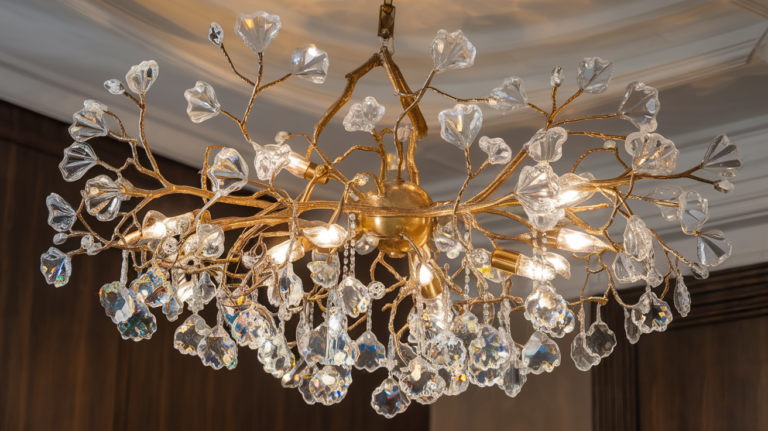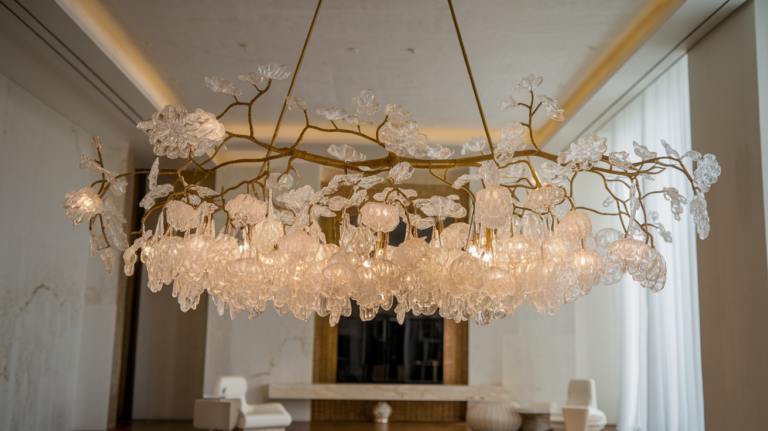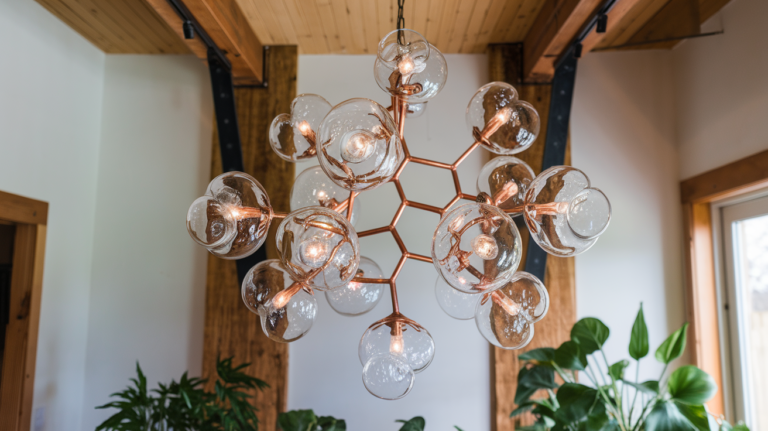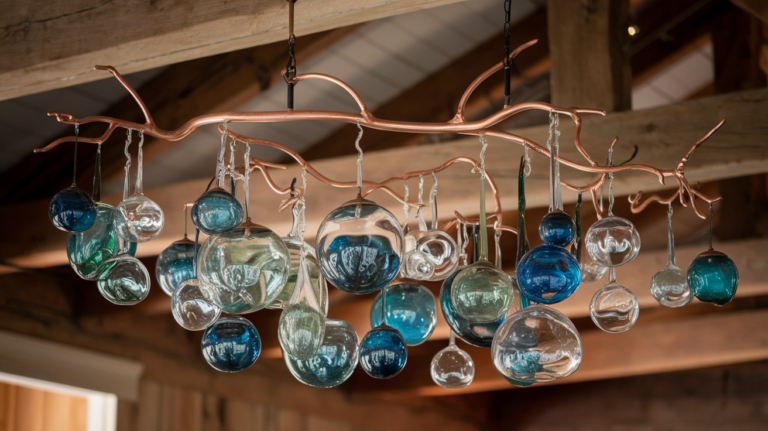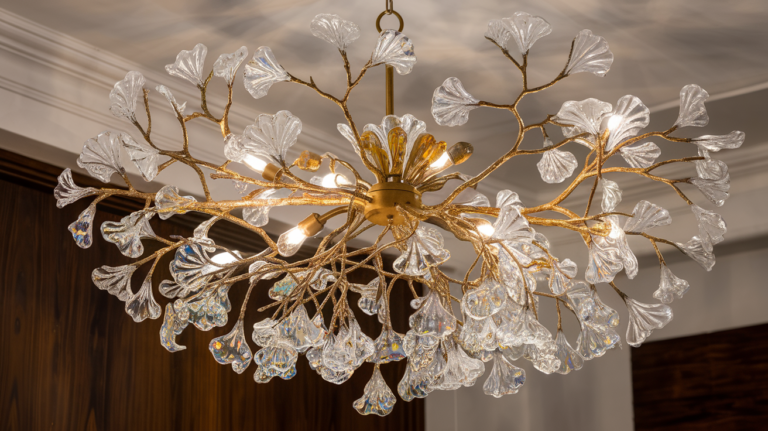
| Key Takeaways |
|---|
| • Rustic lighting has roots in ancient times • Branch chandeliers blend nature with modern design • Lighting styles evolved with technological advances • Rustic designs create warm, cozy atmospheres • Natural materials are key in rustic lighting • Modern rustic lighting combines old and new elements |
1. The Ancient Roots of Rustic Lighting
Rustic lighting is like a time machine that takes us back to the olden days! Long, long ago, people used very simple things to light up their homes. They started with fire in caves, then made candles and oil lamps. These early lights were the great-great-grandparents of the rustic lighting we love today.
As time went on, people got really creative with their lighting. They used things they found in nature, like antlers and branches, to hold their candles. This was the beginning of rustic lighting as we know it. It was all about using what nature gave them to make their homes brighter and cozier. Today, we still love this idea of bringing nature inside, which is why branch chandeliers are so popular!
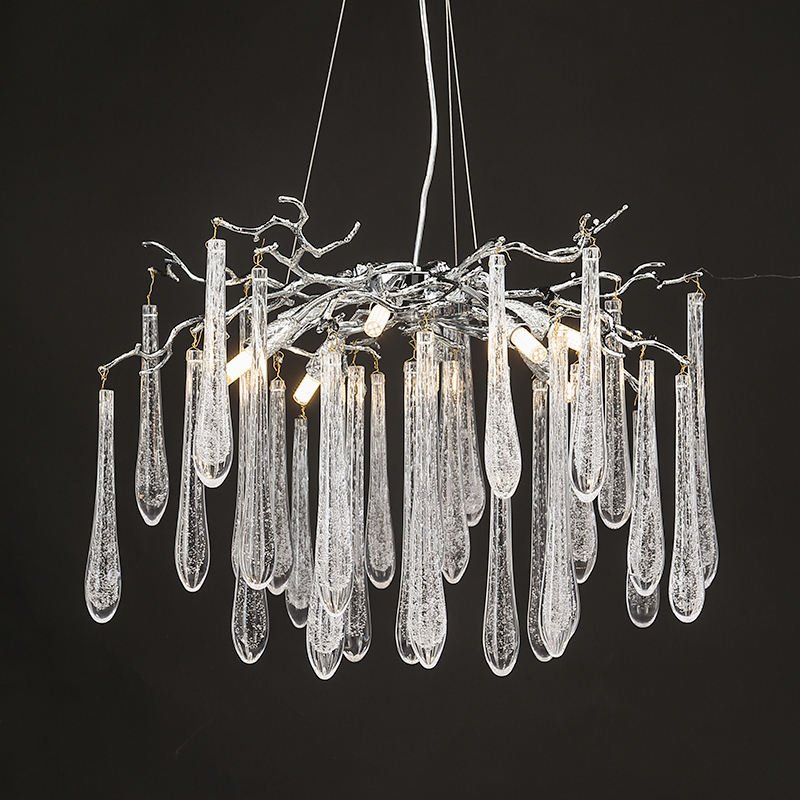
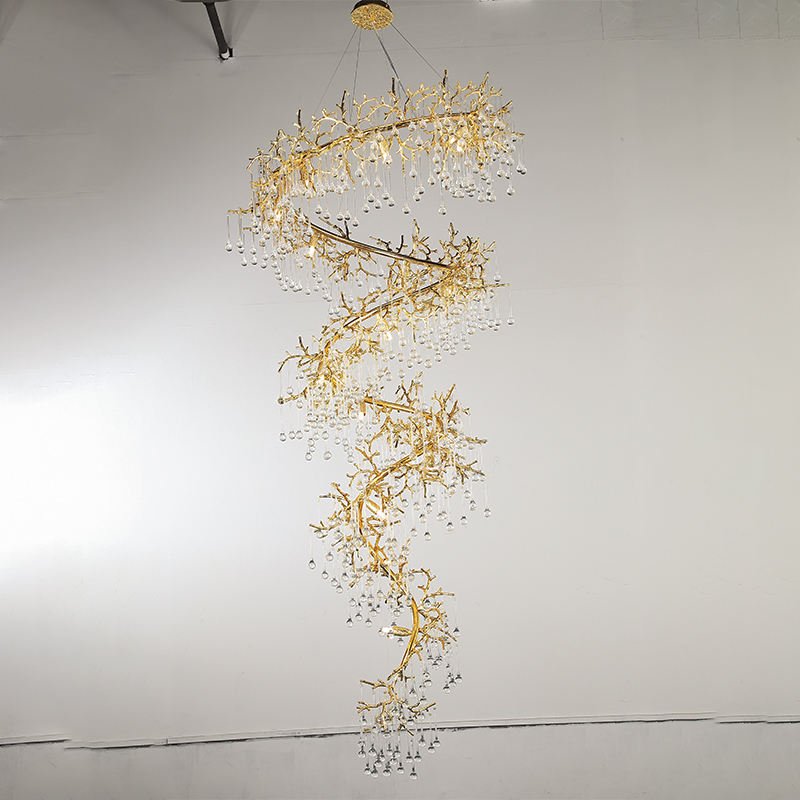
Left: A modern take on ancient branch lighting. Right: A luxurious interpretation of traditional rustic designs.
2. The Middle Ages: Castles and Chandeliers
Imagine you’re in a big stone castle with high ceilings and huge rooms. How would you light it up? In the Middle Ages, people faced this exact problem. They came up with something amazing: the chandelier! These weren’t the fancy crystal ones we think of today. They were big, round pieces of wood or metal with places to put lots of candles.
These early chandeliers were super rustic. They were often made from wagon wheels or wooden beams, and decorated with metal. People would hang them from the ceiling with chains or ropes. The candles would light up the whole room, making it feel warm and cozy despite the cold stone walls. This idea of a big, central light is still used in modern rustic lighting. You can see how it’s evolved in our gilded branch crystal drop chandelier.
| Time Period | Lighting Type | Materials Used |
|---|---|---|
| Ancient Times | Fire, Candles, Oil Lamps | Wood, Stone, Clay |
| Middle Ages | Candle Chandeliers | Wood, Metal, Wagon Wheels |
| Renaissance | Elaborate Chandeliers | Metal, Glass, Crystals |
| Industrial Revolution | Gas Lighting | Metal Pipes, Glass Globes |
| Modern Era | Electric Lighting | Various, including natural materials |
3. The Industrial Revolution: A New Light Dawns
Zoom forward in time to the Industrial Revolution, and lighting got a big shake-up! This was when people started using gas to light their homes and streets. It was like magic – you could have light without fire or candles! But even though the technology was new, people still loved the cozy feel of rustic lighting.
During this time, rustic lighting started to mix old and new ideas. People would use metal pipes (which were everywhere because of all the new factories) to make light fixtures that looked like tree branches. They’d paint them to look like wood or leave them bare for an industrial feel. It was a cool mix of nature and machines! This blend of old and new is still popular today. You can see it in our gold spiral branch crystal chandelier, which mixes natural shapes with shiny materials.
4. The Electric Age: Bright Ideas for Rustic Lighting
When electricity came along, it was like the whole world lit up! Suddenly, people could have bright light anytime they wanted, just by flipping a switch. But here’s the funny thing – even with all this new technology, lots of people still wanted their homes to feel cozy and natural. That’s where rustic electric lighting came in!
Designers started making electric lights that looked like old-fashioned candles or gas lamps. They used materials like wrought iron and distressed wood to make light fixtures feel more rustic. And they didn’t forget about nature – they made lots of lights that looked like trees, branches, and leaves. This is when the modern branch chandelier was born! It combined the old love of nature with new electric technology. You can see how we’ve continued this tradition in our custom lighting designs.
- Evolution of Rustic Electric Lighting:
- Early electric bulbs in rustic-style fixtures
- Use of natural materials like wood and iron
- Nature-inspired designs (trees, branches, leaves)
- Combination of rustic looks with modern technology
- Development of the modern branch chandelier
5. Mid-20th Century: The Rustic Revival
In the middle of the 1900s, people got really excited about rustic style all over again! This was a time when lots of folks were moving to cities and everything was becoming very modern. But many people missed the calm, natural feeling of the countryside. So, they started bringing rustic style into their modern homes.
Rustic lighting became super popular during this time. People loved lights that looked like they were made from tree branches, antlers, or old farm tools. They would put these lights in modern houses to make them feel more cozy and natural. This mix of old and new styles is called “rustic chic,” and it’s still really popular today! You can see how we’ve kept this idea alive in our crystal branch chandelier with gold accents.
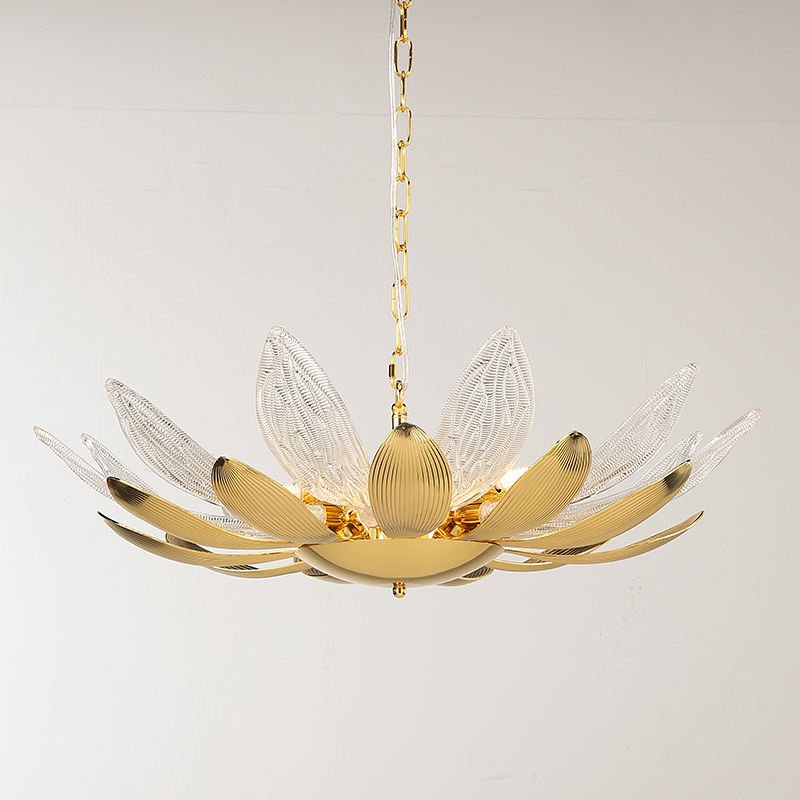
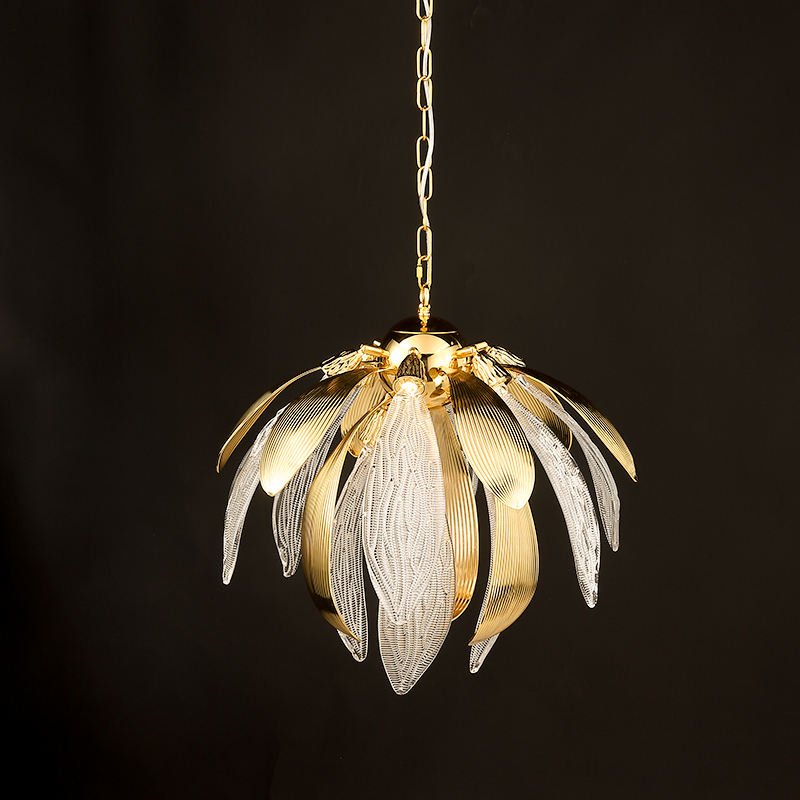
Left: A modern interpretation of rustic floral designs. Right: An elegant pendant light showcasing the evolution of nature-inspired lighting.
6. Late 20th Century to Today: Rustic Goes Global
As we got closer to today, rustic lighting started to include ideas from all over the world! People began to travel more and see how different cultures used natural materials in their lights. This made rustic lighting even more interesting and varied.
Designers started using things like bamboo from Asia, colorful glass beads from Africa, or woven fibers from South America in their rustic light fixtures. They mixed these with the branch and antler designs that people already loved. This global rustic style is super cool because it tells stories from all around the world! You can see how we’ve been inspired by these global influences in our branch chandeliers collection.
| Global Influence | Materials Used | Design Elements |
|---|---|---|
| Asian | Bamboo, Rice Paper | Delicate shapes, Nature motifs |
| African | Beads, Woven Grasses | Bold colors, Geometric patterns |
| South American | Woven Fibers, Terracotta | Earthy tones, Handcrafted look |
| Scandinavian | Light Woods, Glass | Simple shapes, Natural finishes |
7. The Future of Rustic Lighting: Eco-Friendly and High-Tech
What’s next for rustic lighting? It’s all about being kind to the planet and using cool new technology! Today, people are really worried about taking care of the Earth. So, rustic lighting is becoming more “green” or eco-friendly. Designers are using materials that don’t hurt the environment and lights that save energy.
At the same time, rustic lighting is getting high-tech! Imagine a branch chandelier that you can control with your phone, or one that changes colors to match your mood. Some rustic lights even use special LED bulbs that look just like old-fashioned flames but don’t use much electricity. It’s like having the best of both worlds – the cozy feel of nature and the coolness of new technology. You can see how we’re moving into the future with our Luxe Crystal Umbrella Branch Chandelier with LED Lights.
“The future of rustic lighting combines the warmth of nature with the innovation of technology, creating sustainable and smart designs that honor our past while lighting the way to our future.”
Rustic branch chandelier designs have come a long way from the simple candles of ancient times. Through history, they’ve changed with new ideas and technologies, but they’ve always kept that warm, natural feel that people love. Whether it’s a medieval castle or a modern smart home, rustic lighting continues to make spaces feel cozy and connected to nature. As we look to the future, rustic lighting will keep evolving, finding new ways to blend the beauty of the natural world with the exciting possibilities of technology.


